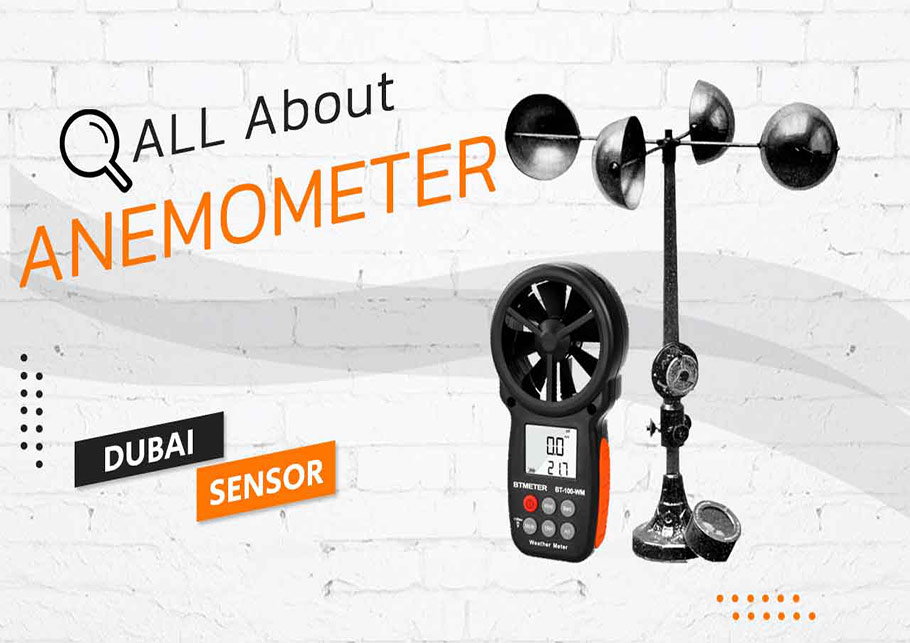Why an Anemometer is Vital for Your Environmental Information Collection
Why an Anemometer is Vital for Your Environmental Information Collection
Blog Article
Anemometers Unveiled: Understanding Their Value in Environmental Tracking and Safety And Security Procedures
The role of anemometers in ecological monitoring and security steps is commonly ignored, yet their value is obvious. These instruments have a lengthy history rooted in clinical questions and technological innovations, evolving to become vital tools in numerous fields. From meteorology to aeronautics security, anemometers play an essential function in supplying precise information that informs decision-making processes and improves general safety. Understanding the complexities of anemometers introduces a globe of crucial understandings that are basic to our understanding of the setting and the procedures we require to guarantee security.
History of Anemometers
The advancement of anemometers can be mapped back to the old people where fundamental wind gauging tools were initial made use of. These very early wind dimension devices laid the foundation for the advancement of more innovative anemometers with time. One of the earliest well-known anemometers was the hemispherical mug anemometer developed by Leon Battista Alberti in the 15th century. This layout contained four hemispherical cups that gathered wind energy, offering a measurement of its intensity based upon the speed of turning.
In the 18th century, the prominent researcher John Thomas Romney Robinson introduced the Robinson anemometer, which included 4 hemispherical mugs installed on horizontal arms that expanded from a main axis. This style became a standard in atmospheric measurements as a result of its accuracy and reliability. For many years, improvements in technology brought about the advancement of even more contemporary anemometers, including ultrasonic anemometers and laser Doppler anemometers, providing boosted precision and efficiency in determining wind speed and instructions. The background of anemometers showcases a remarkable journey of technology and progression in the area of weather forecasting.
Types of Anemometers
Throughout the field of meteorology, different kinds of anemometers have been developed to precisely measure wind speed and instructions. One of the most common kind is the cup anemometer, which contains 3 or four mugs placed on straight arms that rotate with the wind. As the mugs spin, the rate at which they rotate is directly proportional to the wind speed. One more widely utilized type is the vane anemometer, which features a tail or fin that straightens itself with the wind direction. This positioning enables the device to identify the wind direction. Sonic anemometers use ultrasonic signals to gauge wind speed and direction precisely. They are frequently made use of in study applications as a result of their high precision. Hot-wire anemometers run based upon the principle that the cooling result of wind on a heated cable is symmetrical to the wind speed. These anemometers are suitable for gauging reduced wind speeds with high accuracy. Each kind of anemometer has its toughness and is picked based upon the details requirements of the monitoring task at hand.
Applications in Weather Forecasting
Having actually discussed the different sorts of anemometers utilized in weather forecasting for measuring wind speed and direction, it is vital to explore their functional applications in the field. Anemometers play a critical function in meteorology by giving accurate and real-time data on wind problems (anemometer). Meteorologists make use of anemometers to check wind speed and instructions to anticipate climate patterns, problem warnings for severe climate events anonymous like typhoons, hurricanes, and tornados, and analyze atmospheric conditions for aeronautics security
In meteorology, anemometers help in understanding neighborhood and regional wind patterns, which are essential for predicting weather condition modifications and identifying climatic fads. These tools are additionally utilized in research to study microclimates, city warmth islands, and air contamination dispersion. Additionally, anemometers are used in farming to optimize plant management practices, such as irrigation and chemical application, based on wind conditions.
Significance in Air Travel Security
An integral aspect of making sure aviation safety exists in the thorough surveillance of wind problems using anemometers. Anemometers play a crucial role in aeronautics by giving real-time information on wind rate and instructions, aiding pilots in making educated choices during trip, take-off, and touchdown. Solid and unpredictable winds can substantially influence airplane operations, making it important for air travel authorities to count on exact wind measurements to guarantee the safety and security of travelers and team.

In the vibrant atmosphere of air travel, where even minor modifications in wind rate and direction can have extensive effects, anemometers stand as indispensable devices for promoting secure and risk-free air travel.
Role in Environmental Research Study
Anemometers play an important role in ecological research study by offering vital information on wind speed and instructions. By accurately gauging wind features, anemometers assist researchers analyze the activity of toxins in the air, analyze the influence of commercial discharges, and anticipate the spread of impurities in the environment.


Verdict
In final thought, anemometers have actually played a vital role in ecological tracking and safety measures. Recognizing the value of anemometers is vital for precisely gauging wind rate and instructions, which is vital for forecasting weather condition patterns, ensuring safe air travel procedures, and conducting environmental studies.
One of the over at this website earliest well-known anemometers was the hemispherical mug anemometer created by Leon Battista Alberti in the 15th century. Over the years, innovations in modern technology led to the advancement of more modern-day anemometers, consisting of ultrasonic anemometers and laser Doppler anemometers, supplying enhanced precision and efficiency in measuring wind speed and instructions. Hot-wire anemometers run based on the concept that the cooling impact of wind on a heated wire is symmetrical to the wind speed. Meteorologists utilize anemometers to monitor wind speed and instructions to forecast climate patterns, concern warnings for serious climate events like storms, cyclones, and tornadoes, and assess climatic problems for aviation safety and security.
Recognizing the importance of anemometers is essential for accurately gauging wind speed and direction, which is crucial for forecasting climate patterns, guaranteeing risk-free aeronautics procedures, and carrying out ecological website link research studies. (anemometer)
Report this page